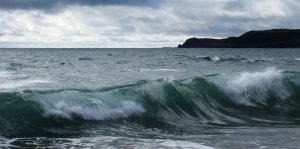
It has been a good summer – windy, yes, but plenty of good weather. Two thirds of the Harbour’s revenue comes from residents – mainly harbour dues and moorings – and this income is predictable and reliable: but the remaining third comes from visitors and this is chancy because it depends heavily on the weather. This year visitor numbers should be up because of the sunshine, but undoubtedly the long-term trend is down. Last year there were 5000 visiting yachts, whereas 10 years ago it was not uncommon to have 8000; the average length of visiting yachts is now over 11m, and 15-20m yachts are often seen, whereas 10 years ago the average was under 10m and 15-20m yachts were more of a rarity; the peak month now is often July (before the school holidays?), whereas a few years ago it was August. Bigger boats for rougher weather?
It is important to take this into account when planning and that probably means relying less on income from visitors whilst still making sure that they have a good experience when they come. Each year I try to spend a day with the Harbour staff (“Harbour Board member on work experience”, they mock) and am able to ask visitors what they think of the Harbour. I am glad to say visitors are full of compliments.
But we still have to do some work with visitors from abroad. The Bar is something we have always with us: the Hydrographic Office’s collection of charts dating back to 1859 shows that the Bar may have moved a bit here and there over the years, but has not altered much since 1901. However, there is one French almanac which says that ʻentering Salcombe on an ebb tide is dangerousʼ. That, of course, chimes with Tennyson’s 1889 elegy Crossing the Bar and the coming centenary on 27 October of the 1916 Salcombe lifeboat disaster. But it was the weather that was the problem: when the William and Emma was tragically up-ended whilst crossing the Bar and 13 of her crew of 15 perished, they were in near hurricane-force winds.
Comments are closed, but trackbacks and pingbacks are open.